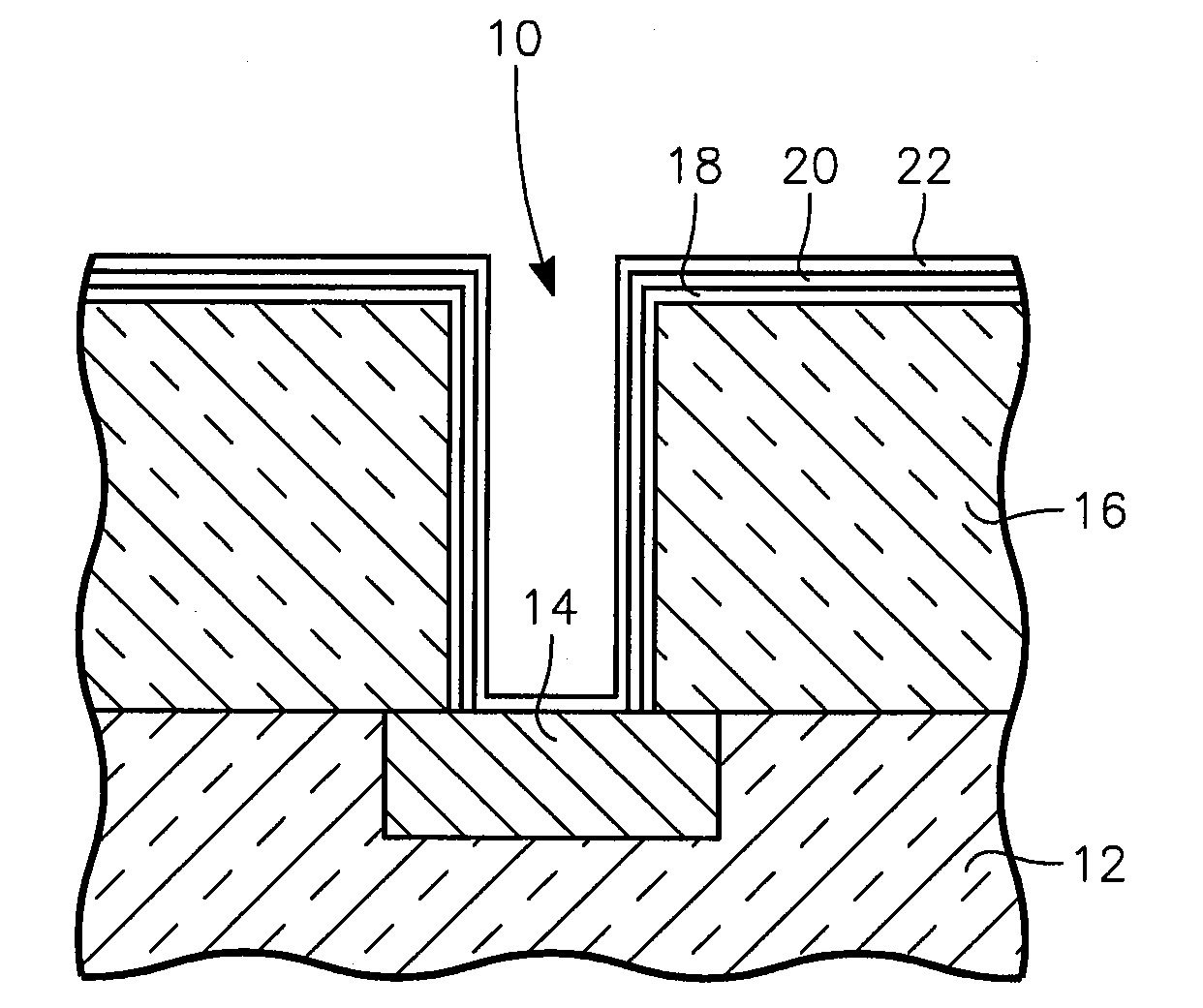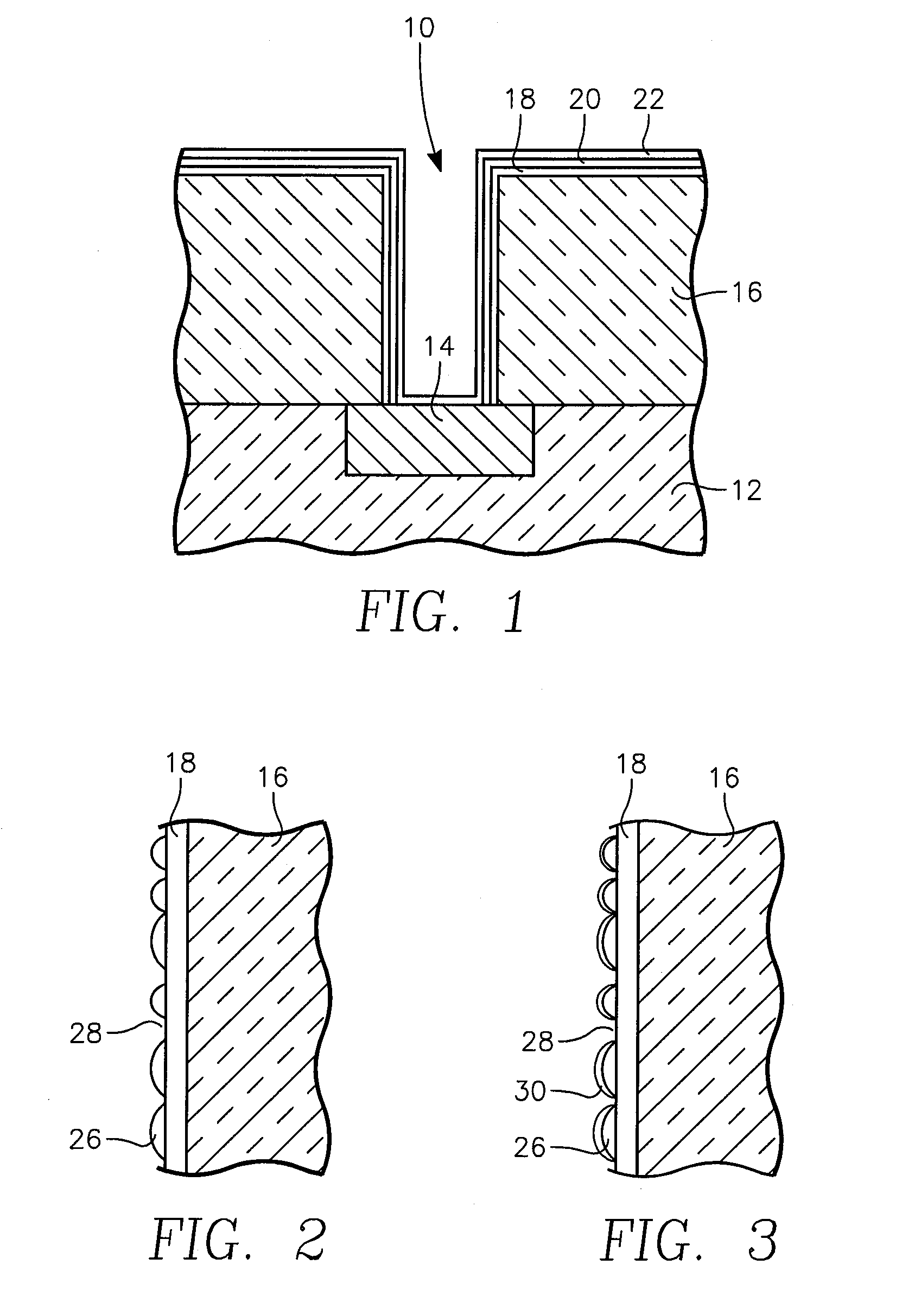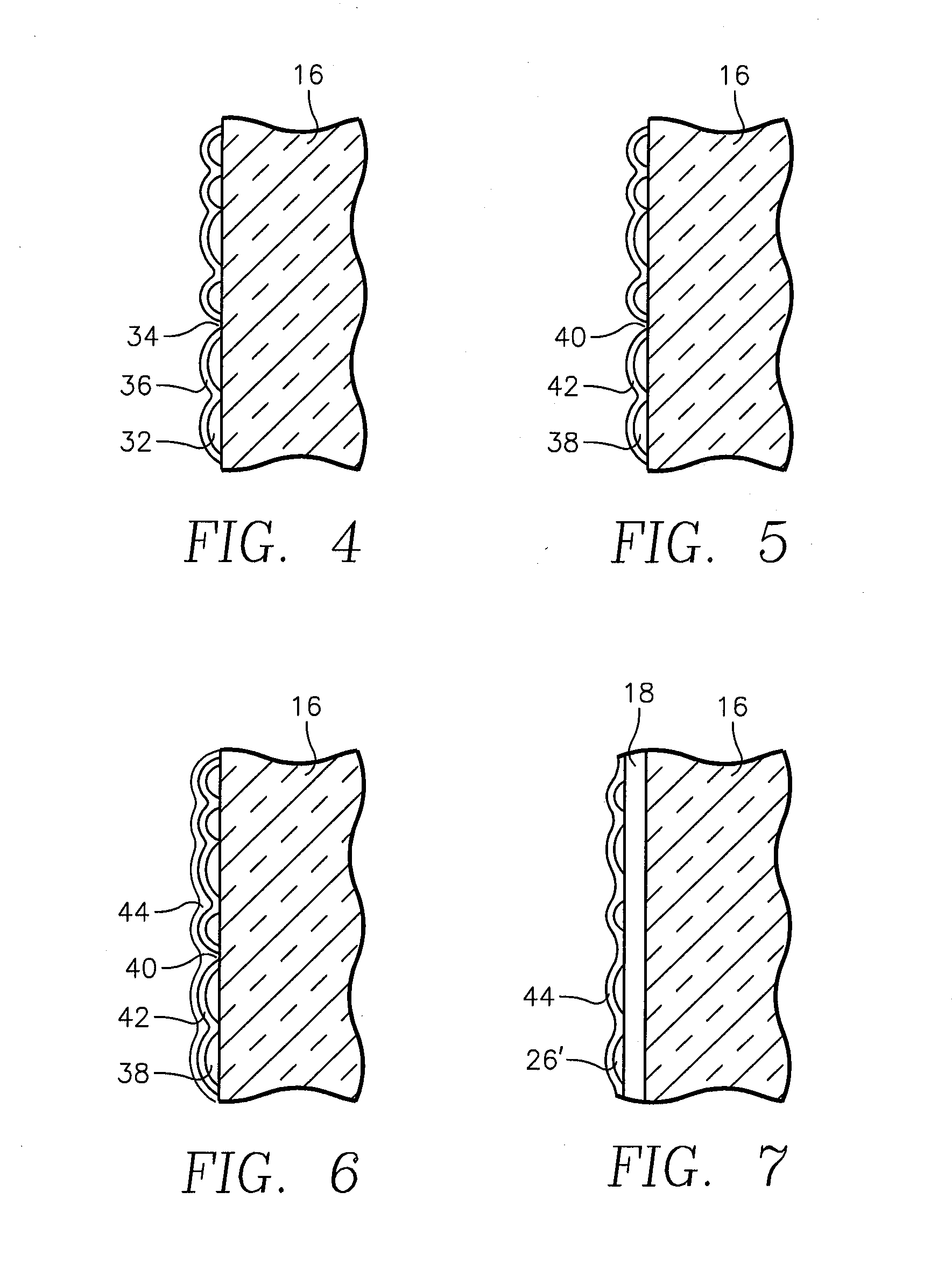Oxidized Barrier Layer
a barrier layer and oxidized technology, applied in the direction of vacuum evaporation coating, semiconductor/solid-state device details, coatings, etc., can solve the problems of increasing the conductivity of the integrated circuit, the fabrication and reliable operation of the integrated circuit requires a more complex structure, and the reliability problem is increased
- Summary
- Abstract
- Description
- Claims
- Application Information
AI Technical Summary
Benefits of technology
Problems solved by technology
Method used
Image
Examples
Embodiment Construction
[0027]We have observed that thin layers of ruthenium tantalum tend to deposit on the sidewalls of the vias to have a roughened surface. Pure tantalum seems to sputter deposit with a smoother surface than ruthenium tantalum. In the extreme, as illustrated in the cross-sectional view of FIG. 2, ruthenium tantalum deposits on the ruthenium tantalum nitride layer 18 as isolated RuTa islands 26 with gaps 28 between them. When copper is then sputter deposited, although some of it lands on the ruthenium tantalum nitride layer 18, it does not well adhere to the nitride material but instead forms a poor, possibly discontinuous copper seed layer 30 is formed, as illustrated in FIG. 3, with some of the gaps 28 remaining to expose the underlying ruthenium tantalum nitride layer 18. As a result, when copper is electroplated to fill the remainder of the via hole 10, the gaps in the copper seed layer 30 may interrupt the electroplating current and the exposed ruthenium tantalum nitride does not we...
PUM
| Property | Measurement | Unit |
|---|---|---|
| thickness | aaaaa | aaaaa |
| pressure | aaaaa | aaaaa |
| dielectric | aaaaa | aaaaa |
Abstract
Description
Claims
Application Information
 Login to View More
Login to View More - R&D
- Intellectual Property
- Life Sciences
- Materials
- Tech Scout
- Unparalleled Data Quality
- Higher Quality Content
- 60% Fewer Hallucinations
Browse by: Latest US Patents, China's latest patents, Technical Efficacy Thesaurus, Application Domain, Technology Topic, Popular Technical Reports.
© 2025 PatSnap. All rights reserved.Legal|Privacy policy|Modern Slavery Act Transparency Statement|Sitemap|About US| Contact US: help@patsnap.com



